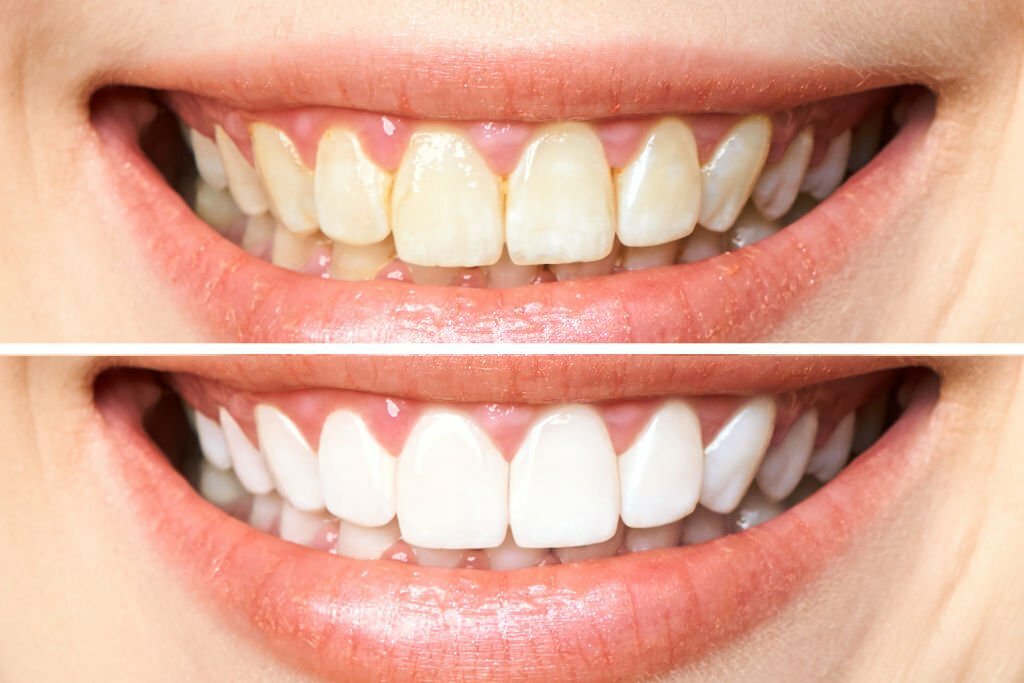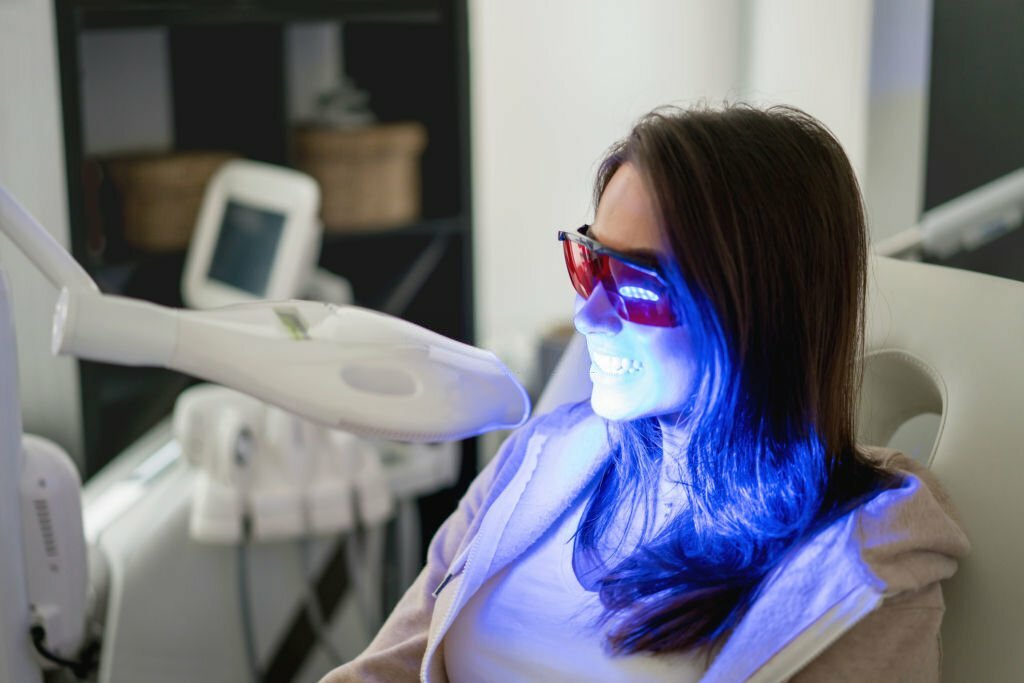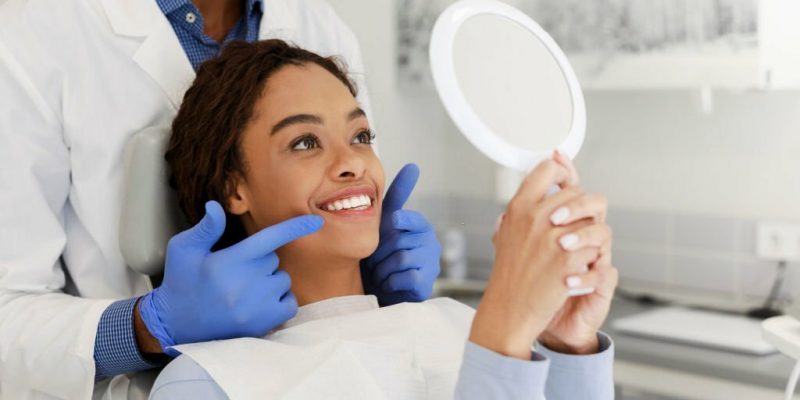Smile is the universal language of kindness! But what if you’re not confident enough with your natural smile?
Interestingly, that’s where professional teeth whitening comes into the picture. Teeth whitening from a dentist helps you embark on a dull-to-dazzling transformation.
This blog takes a closer look at the different aspects of teeth whitening and explores the various procedures associated with the treatment.
Introduction:
Did you know that nearly 67% of Americans (7 in 10) are self-conscious about their teeth?
Discolored teeth are one of the major reasons why a majority of us are conscious, underconfident, and shy being ourselves around people. But this is where professional teeth whitening enters as your secret to a perfect smile.
The best teeth whitening dental procedures help you get a celebrity smile and boost your confidence. In this article, we’ll uncover the mysteries of teeth whitening, explore different treatment options, and discuss the steps of professional cleaning treatment.
Understanding Teeth Discoloration
Discoloration of the teeth is a common dental problem that affects people of all ages. Genetics, drugs, poor dental hygiene, and lifestyle choices like smoking and drinking coffee, red wine, or tea can all cause discoloration.
Based on the part of the side, there are two types of teeth discoloration:
- Extrinsic: Extrinsic discoloration affects the outer layer of the tooth (the enamel) and results from external elements such as alcohol, food, and cigarettes.
- Intrinsic: Intrinsic discoloration affects the inner layer of the tooth (the dentin) and results from internal causes such as heredity, age, and medicine.
While discoloration is not considered a major medical problem, it can indicate more serious dental problems like gum disease, enamel erosion, and tooth decay. Therefore, visiting a dentist who whitens teeth when encountering stains in your oral cavity becomes mandatory.
The Allure Of A Bright Smile: How Teeth Whitening Works?
Many are in a dilemma before getting their teeth whitened by a dentist. Most individuals consider teeth whitening and teeth cleaning to be the same. However, that’s not the case!
Teeth whitening is a cosmetic procedure carried out by trained professionals. This process involves removing discoloration and stains from the enamel of your teeth. The whitening procedure includes sanding down stains, UV therapy, and bleaching, among other steps.

Teeth whitening at a dentist comprises several processes that aim to make your natural teeth appear whiter and brighter. Here are some advantages of undergoing the procedure:
- Teeth whitening might help you feel more confident and appealing.
- Teeth whitening can make them appear healthier and younger.
- Teeth stained or yellow can be unsightly, and whitening can help alleviate that self-consciousness.
- Whitening is a simple and inexpensive dentist procedure that helps you reduce the chances of severe oral problems.
So now that we know what professional teeth whitening is let’s look at how teeth are whitened by professionals.
Professional Tooth Cleaning: The Secret Behind A Pearly Smile
When it comes to teeth whitening, you’re bound to get confused with different methods for teeth whitening. Teeth whitening options flood the market, ranging from fluoride toothpaste to DIY over-the-counter (OTC) and professional cleaning.
But since most whitening products like fluoride-rich mouthwash, dental whitening bleach, and carbamide peroxide can be aggressive and irritating, it’s always wise to connect with your nearest dental professional for a premier experience.
Professional tooth whitening dentists generally rely on a high-performance tooth whitening gel and LED light for effective treatment. Here’s an overview of the different steps involved in professional teeth cleaning at your nearest dentist:
Steps Involved In Professional Teeth Whitening
Step 1: Prepare The Oral Cavity
When consulting your dentist for a whiten teeth procedure, they’ll first diagnose your oral cavity and examine the current condition of your teeth. Once done, they’ll compare the shade of the teeth before initiating the treatment process.
During this phase, the dentist will remove any tartar or formation in your oral cavity, polish the teeth, and fill cavities (if any) before bleaching the tooth to ensure the teeth-whitening gel works at peak efficiency.
Step 2: Cover The Surrounding Areas
The second step starts by covering your cheek, lips, tongue, and gum. Once you bleach the oral cavity, your dentist will apply a protective gel on the gums and surrounding tissues to prevent the whitening gel from coming into contact with the gum tissues and the inside of the mouth.

Step 3: Blow Dry & Simulate
Once your oral cavity is ready, the teeth bleaching dentist will use a blow-dry tool to dry your teeth and apply whitening gel. At this stage, the dentist uses the blue LED light to stimulate the gel polish to dissolve and permeate through the enamel layer.
Step 4: End Results
The step is generally repeated for 3–4 rounds, with each session approximately 15 minutes apart. The procedure takes 45 minutes to an hour, depending on the state of the teeth. Once done, the dentist whitening teeth will apply a special fluoride coating to the teeth after the last session to alleviate tooth sensitivity.
After the process is complete, your dentist matches the current shade of your teeth to its natural color to ensure effective treatment. Therefore, while you’re at it, don’t expect unnatural results.
It’s important to note that teeth whitening does not change the natural color of your teeth; instead, it returns them to their original tone.
Takeaway
- Over 67% of Americans are self-conscious about their teeth.
- There are several teeth whitening procedures, including home whitening kits, over-the-counter kits, and fluoride gels.
- Teeth discoloration is of two types: extrinsic and intrinsic.
- Teeth whitening doesn’t alter the natural color of your teeth; rather, it returns them to their natural color.



